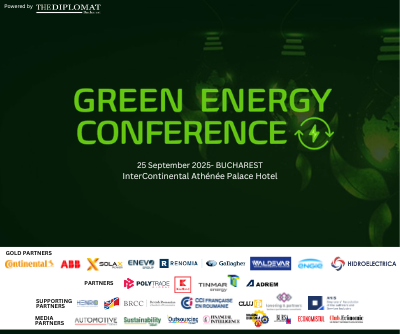EU legislation sets CO2 reduction targets for passenger cars

Climate change is a global challenge which demands collective action and international cooperation. The automotive sector is playing a leading role, embracing its responsibility to reduce CO2 emissions from vehicles and production.
Currently, the European automobile industry invests 53.8 billion Euro into R&D annually, much of which goes towards fuel-efficiency technologies, putting the European industry in the global lead for clean vehicles and production.
This has resulted in significant cuts in CO2 emissions from cars and commercial vehicles and in energy-efficiency improvements at plants across Europe.
The industry continues to stress the importance of joint action by all stakeholders. Vehicle makers, fuel companies, governments, transport operators, and consumers must all play their part in this integrated approach necessary to reduce CO2 emissions efficiently.
Cars are responsible for around 12 percent of total EU emissions of carbon dioxide (CO2), the main greenhouse gas.
Since 2009, EU legislation has been setting mandatory emission reduction targets for new cars. The first targets applied in 2015. Stricter targets will apply from 2021 on, with a phase-in from 2020.
On 17 April 2019, the European Parliament and the Council adopted Regulation (EU) 2019/631, setting CO2 emission performance standards for new passenger cars and for new light commercial vehicles (vans) in the EU for the period after 2020. The new Regulation will start applying on 1 January 2020.
Until that date, the current Regulation setting CO2 emission standards for cars will apply.
2015 target
Since 2015, a target of 130 grams of CO2 per kilometre applies for the EU fleet-wide average emission of new passenger cars.
Emissions of 130 g CO2/km correspond to a fuel consumption of around 5.6 litres per 100 km (l/100 km) of petrol or 4.9 l/100 km of diesel.
This EU fleet-wide target was already reached in 2013, two years ahead of schedule.
According to provisional data, the average emissions level of the new cars registered in 2018 in the EU and Iceland were 120.4 g CO2/km (EEA data). Since 2010, average emissions have decreased by 20 g CO2/km (14.2 percent).
2021 target
From 2021, phased in from 2020, the EU fleet-wide average emission target for new cars will be 95 g CO2/km.
This emission level corresponds to a fuel consumption of around 4.1 l/100 km of petrol or 3.6 l/100 km of diesel.
Specific emission targets for manufacturers
The binding emission targets for manufacturers are set according to the average mass of their vehicles, using a limit value curve. This means that manufacturers of heavier cars are allowed higher emissions than manufacturers of lighter cars. The curve is set in such a way that overall, the targets for the EU fleet-wide average emissions are achieved.
Phase-in of requirements
The target of 130 g/km was phased in between 2012 and 2015.
A phase-in period will also apply to the target of 95 g/km. In 2020, the emission targets will apply for each manufacturer’s 95 percent least-emitting new cars. From 2021 on, the average emissions of all newly registered cars of a manufacturer will have to be below the target.
Penalty payments for excess emissions
If the average CO2 emissions of a manufacturer’s fleet exceed its target in a given year, the manufacturer has to pay an excess emissions premium for each car registered.
Until 2018, this premium had amounted to
Five Euro for the first g/km of exceedance
15 Euro for the second g/km
25 Euro for the third g/km
95 Euro for each subsequent g/km.
From 2019 on, the penalty will be 95 Euro for each g/km of target exceedance.
Eco-innovations
To encourage eco-innovation, manufacturers can be granted emission credits for vehicles equipped with innovative technologies for which it is not possible to demonstrate the CO2-reducing effects during the test procedure used for vehicle type approval.
Such emission savings have to be demonstrated based on independently verified data. The maximum emission credits for these eco-innovations per manufacturer are 7 g/km per year.
Super credits
Manufacturers are given additional incentives to put on the market zero- and low-emission cars emitting less than 50 g/km through a “super-credits” system. This was already applied between 2012 and 2015 and will be applied again for the period 2020-2022.
For the purpose of calculating a manufacturer’s average specific emissions, such cars will then be counted as:
2 vehicles in 2020
1.67 vehicles in 2021
1.33 vehicles in 2022.
A cap on the super-credits is set at 7.5 g/km per manufacturer over the three years.
Depreciations and exemptions
Manufacturers responsible for fewer than 300,000 new passenger cars registered in the EU in a given year may benefit from exemptions or depreciations.
Manufacturers responsible for between 10,000 and 300,000 cars registered per year (“niche” manufacturers) can apply for a depreciation target for the years 2012-2019 equal to a 25 percent reduction from their 2007 average emissions, and a depreciation target from 2020 on of a 45 percent reduction from the 2007 level.
Manufacturers responsible for between 1,000 and 10,000 cars registered per year (“small volume” manufacturers) can propose their own depreciation target, which has to be approved by the Commission based on the criteria set in the Regulation.
Manufacturers responsible for fewer than 1,000 cars registered per year are exempted from meeting a specific emissions target, unless they voluntarily apply for a depreciation target.
CO2 from new cars up for second consecutive year, raising auto industry concerns
Data issued by the European Environment Agency (EEA) confirm that CO2 emissions from new passenger cars in the EU28 rose for the second year running in 2018, up 1.8 percent from 2017. Last year was also the second year when petrol cars were the most-sold fuel type, further expanding their market share while sales of diesel-fuelled cars continued to decline. New vans also recorded a CO2 increase (+1.3 percent) for the first time since records began.
Some 8.5 million new petrol cars were sold last year, up from 7.6 million in 2017, according to data from the European Automobile Manufacturers’ Association (ACEA). In 2018, 5.4 million new diesel cars were registered, representing a drop of 1.2 million cars compared to the previous year. At the same time, just under 302,000 electrically chargeable cars were sold in 2018.
Clearly, there is a correlation between diesel/petrol sales and CO2 emissions. This is because petrol cars emit more CO2 than equivalent diesel cars. “Although the gap between average CO2 emissions from diesel and petrol cars is narrowing, it is still significant – especially as almost one million more new petrol cars were sold last year compared to 2017,” said ACEA Secretary General, Erik Jonnaert.
Under the current scenario, the prospect of fines for not reaching the 2020/2021 CO2 target is, to a varying degree, a serious concern for car makers. Obviously, failure to meet these targets would also put manufacturers at a major disadvantage for reaching the recently set 2025 and 2030 CO2 targets.
As this is clearly not in the industry’s interest, auto makers are investing massively in all low- and zero-emission technologies – including full battery electric cars, plug-in hybrids and hybrid electric vehicles, as well as those fuelled by natural gas or hydrogen.
ACEA urges the 28 EU member states to step up investments in charging points for electrically chargeable vehicles and refuelling stations for other alternatively powered cars, putting in place meaningful and sustainable incentive schemes to encourage more consumers to buy them.
“Amidst the strong push for alternatively-powered vehicles, we should not write off the latest generation of diesel cars, which not only emit less CO2 than their petrol counterparts, but also deliver low on-road pollutant emissions in practice,” Jonnaert stressed.
(From the print edition)



















